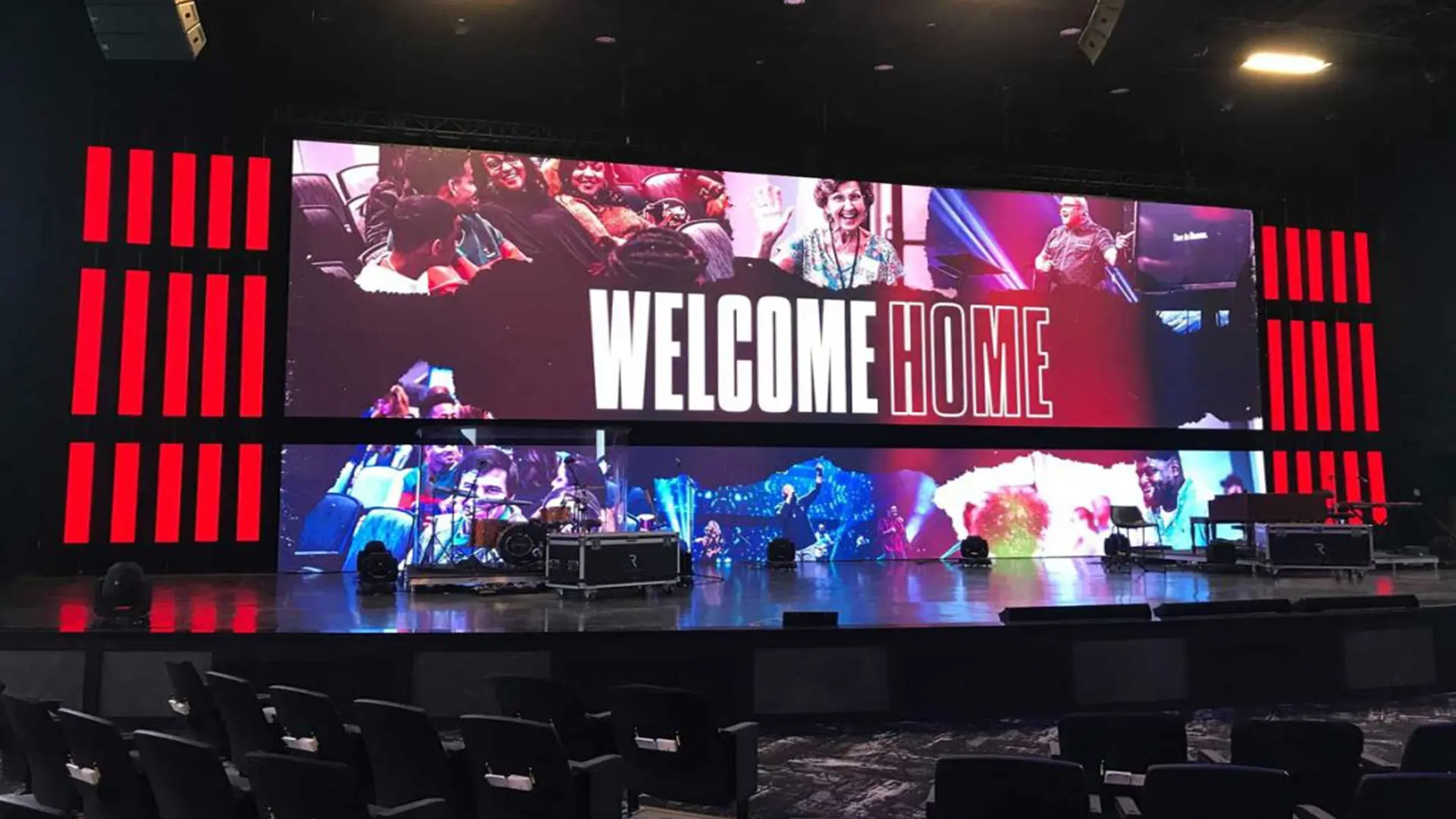
In today’s visually-driven event landscape, **rental stage LED screens** are essential tools for delivering high-impact visuals that captivate audiences. Whether you're organizing a concert, theater performance, corporate conference, or outdoor broadcast, the way you set up and operate your LED screen can make or break the audience experience.
Poor setup and operation can lead to:
Suboptimal viewing angles and brightness
Distorted or improperly scaled content
Technical failures during critical moments
Overheating or excessive power draw
This guide outlines 10 professional best practices to help you get the most out of your **stage LED display**, ensuring reliable performance, stunning visuals, and seamless integration with your production environment.
Proper planning is crucial for a successful LED screen installation. Begin by conducting a detailed site survey:
Venue dimensions and ceiling height
Audience sightlines and optimal viewing distances
Power availability and circuit capacity
Structural load-bearing limits
| Planning Tool | Use Case |
|---|---|
| CAD Software | Simulate screen placement |
| Laser Measuring Tools | Accurate distance mapping |
Selecting the appropriate pixel pitch ensures clarity without overspending:
| Viewing Distance | Recommended Pixel Pitch |
|---|---|
| 0–10 ft | P1.2–P1.9 |
| 10–30 ft | P2.5–P3.9 |
| 30+ ft | P4.8+ |
Pro Tip: Overly fine pixel pitch increases cost and complexity without noticeable benefit for distant viewers.
Strategic placement enhances visibility and immersion:
Center stage: Ideal for concerts and theatrical performances
Flanking positions: Perfect for corporate presentations
Overhead installations: For supplementary content in large venues
Horizontal viewing angle: ≥160°
Vertical viewing angle: ≥140°
Brightness range: 3000–7000 nits for daylight visibility
Pro Tip: Maintain consistent curvature radius in curved setups to prevent image warping.
Effective power and cooling strategies are essential to avoid overheating and system failure.
| Screen Size | Power Consumption | Recommended Circuit |
|---|---|---|
| 10m² @ P2.5 | 4–6kW | Dedicated 220V/30A |
| 50m² @ P3.9 | 12–18kW | 3-phase power |
Use power conditioners to protect against surges
Monitor temperature (ideal range: 15–35°C)
Allow 6–12 inches of rear clearance for ventilation
Red Flag: Temperatures above 60°C drastically shorten LED lifespan.
High-quality content tailored to LED displays maximizes visual impact:
Design at native resolution (avoid upscaling)
Use PNG/TGA formats for crisp graphics
60fps minimum for motion content
10-bit color depth
Color space: Rec. 709 or DCI-P3
Refresh rate: ≥3840Hz for camera compatibility
Pro Tip: Create modular content templates matching your LED wall layout for faster editing and seamless playback.
Safety should never be compromised when installing overhead or elevated LED structures.
Average weight: 30–50kg/m²
Rigging safety factor: 5:1
Engineered rigging plans
Redundant suspension points
Daily structural inspections
Warning: Never exceed venue weight limits or use non-rated hardware.
Calibration ensures accurate color reproduction and consistency across all AV elements.
Uniformity correction (eliminates hot spots)
White balance to D65 standard
Gamma correction (2.2–2.4)
Match colors with other displays/projections
Spectroradiometers (X-Rite, Klein)
Waveform monitors
3D LUT calibration systems
Reliable signal flow prevents interruptions and ensures smooth operation.
Main Signal: Fiber optic SDI / 12G-SDI
Backup: HDMI 2.1 with fiber extenders
Control: Dual-network Dante/AES67
Backup media servers
Auto-switching power supplies
Spare LED modules (minimum 10%)
Smooth on-site execution requires preparation and trained personnel.
Pixel health check
Content verification
Emergency shutdown procedures
Basic troubleshooting
Content switching workflows
Brightness adjustment based on lighting conditions
Outdoor deployments require additional protection against environmental factors.
Minimum IP65 rating for weather resistance
Wind load calculations (up to 60mph)
Heating systems for cold environments
Pro Tip: Use anti-glare treatments in sunny locations to improve readability.
Proper handling after the event extends the life of your rental LED equipment.
Clean with isopropyl alcohol only
Store in climate-controlled environments
Inspect connectors before returning panels
Never stack LED panels directly
Use protective corner covers
Transport in shock-mounted cases
By following these 10 best practices for setting up and operating **rental stage LED screens**, you’ll ensure:
✔ Flawless visual performance
✔ Reliable operation under all conditions
✔ Maximum return on your AV investment
✔ Enhanced audience engagement
Ready to elevate your event production? Partner with a professional LED rental company that understands these technical requirements and provides expert support from planning to execution.
<!--!doctype-->Hot Recommendations
Hot Products
Get a Free Quote Instantly!
Talk to Our Sales Team Now.
If you are interested in our products, please contact us promptly
Reach out to our sales team to explore customized solutions that perfectly meet your business needs and address any questions you may have.
Email Address:info@reissopto.comFactory Address:Building 6, Huike Flat Panel Display Industrial Park, No. 1, Gongye 2nd Road, Shiyan Shilong Community, Bao'an District, Shenzhen city , China
whatsapp:+86177 4857 4559